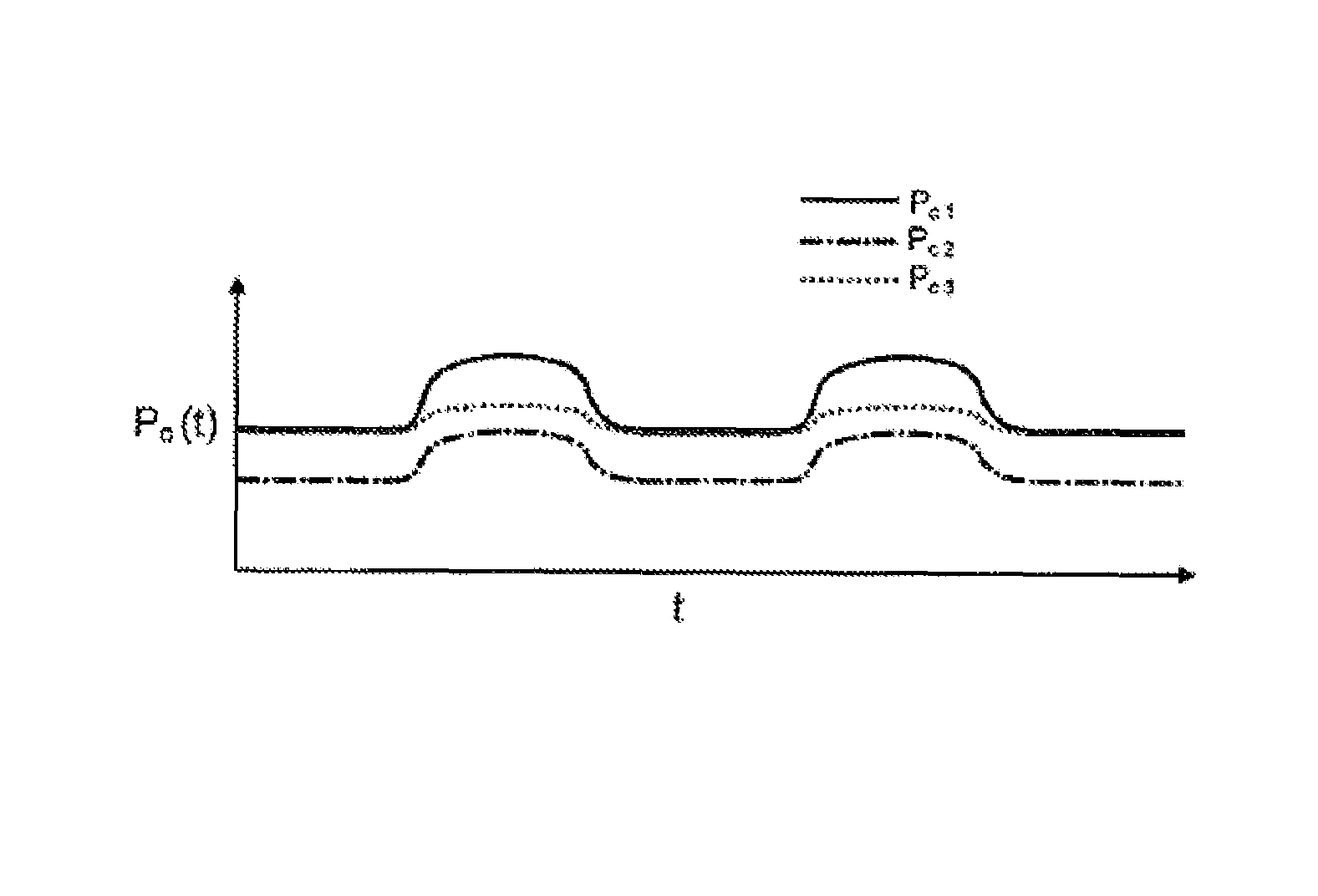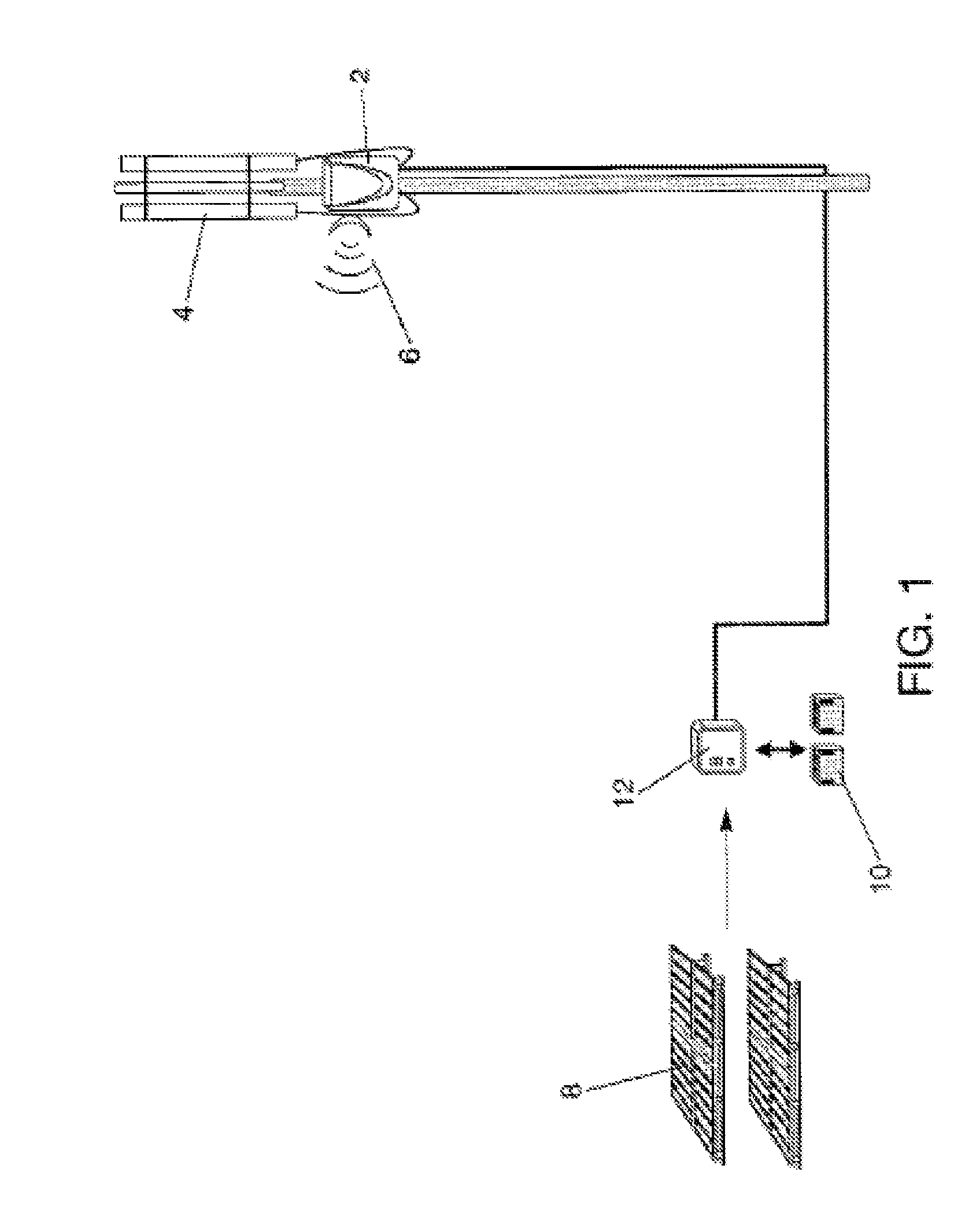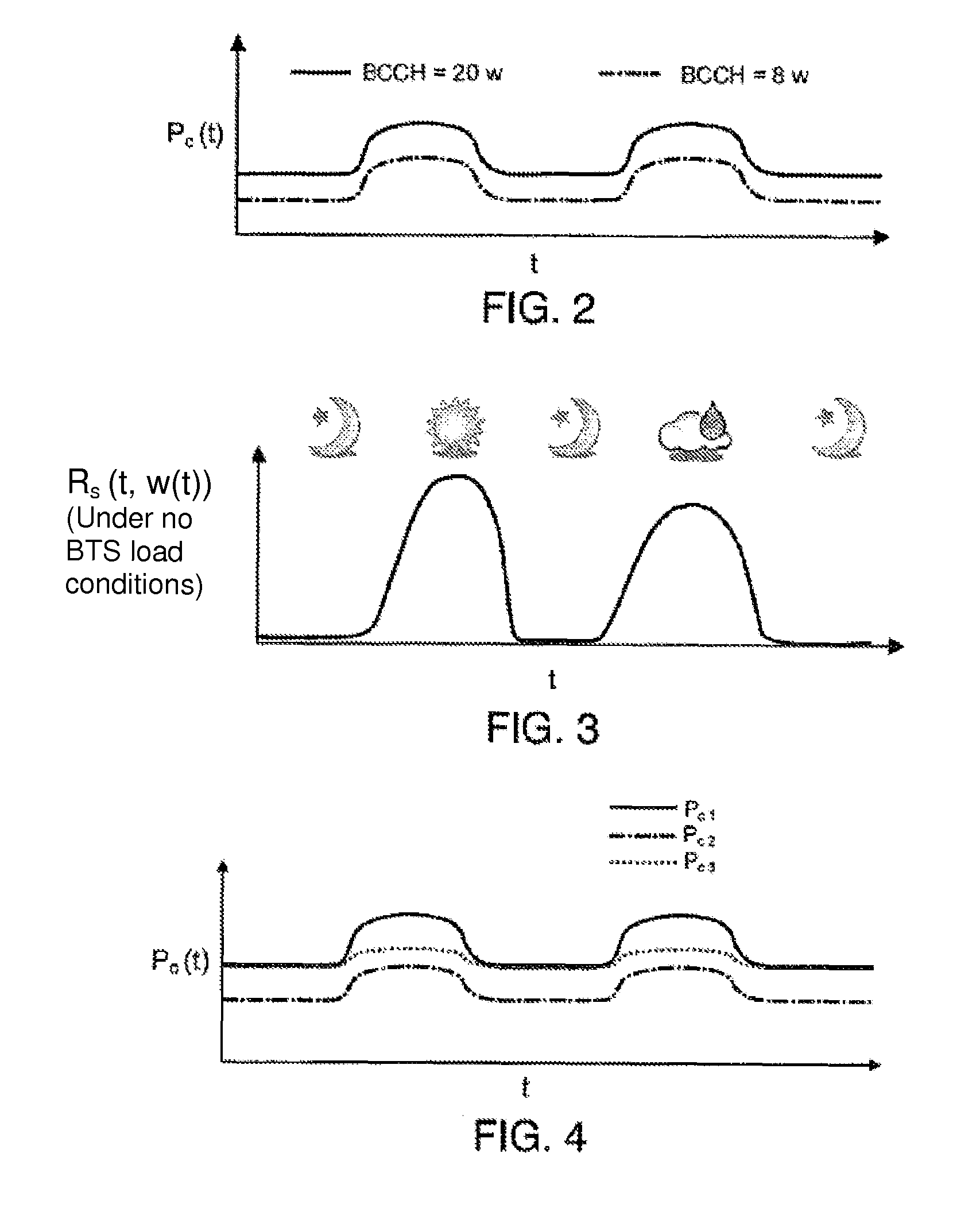Energy managed service provided by a base station
a technology of energy management and base station, applied in power management, high-level techniques, wireless communication, etc., can solve the problems of inability to meet the needs of customers, the service level of the base station is often large, and the energy source of the sun or wind is inherently unstable, so as to improve the service level
- Summary
- Abstract
- Description
- Claims
- Application Information
AI Technical Summary
Benefits of technology
Problems solved by technology
Method used
Image
Examples
Embodiment Construction
[0034]FIG. 1 shows a diagram of the relevant elements of a base station 2 supplied with renewable energy, wherein the present invention may be implemented. The base station is referred to as Base Transceiver Station (BTS) in case of a GSM cellular communication network or Node B in case of a UMTS cellular communication network. The base station 2 comprises mobile service coverage antennas 4 and a transmission system and antenna 6 for communicating to the hierarchically next higher network node in the network architecture, in case of a GSM network a Base station Controller (BSC) and in case of a UMTS network a Radio Network Controller (RNC). The base station is supplied with power from a renewable energy generator 8, in this case consisting of solar panels. However, the renewable energy generator may also be a wind turbine, bio-cells, etc. In case that the renewable energy generator does not generate enough power to fulfil the energy demand of the base station, the base station is su...
PUM
 Login to View More
Login to View More Abstract
Description
Claims
Application Information
 Login to View More
Login to View More - R&D
- Intellectual Property
- Life Sciences
- Materials
- Tech Scout
- Unparalleled Data Quality
- Higher Quality Content
- 60% Fewer Hallucinations
Browse by: Latest US Patents, China's latest patents, Technical Efficacy Thesaurus, Application Domain, Technology Topic, Popular Technical Reports.
© 2025 PatSnap. All rights reserved.Legal|Privacy policy|Modern Slavery Act Transparency Statement|Sitemap|About US| Contact US: help@patsnap.com



